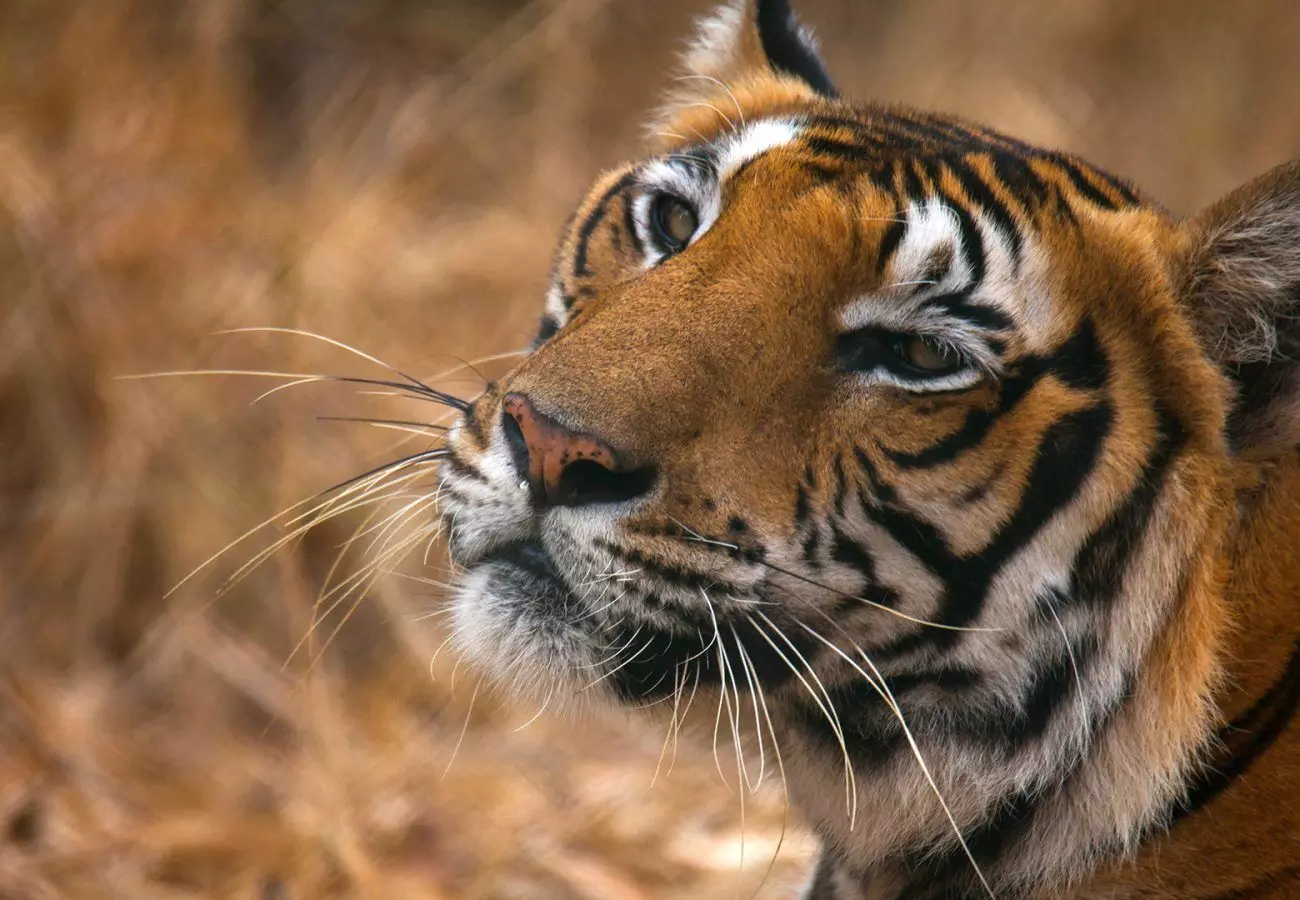'Ek Tha Tiger': 71 big cats die of unnatural causes since 2021; poaching one of the reasons
By the mid-20th century, India's tiger population was in a rapid decline due to hunting, habitat loss, and other human activities
By Sri Lakshmi Muttevi
Representational Image.
New Delhi: Seventy-one tigers died due to unnatural causes, including poaching and seizures, since 2021, according to the Union Environment Ministry.
Responding to a query in the Lok Sabha, Minister of State for Environment, Forest and Climate Change, Kirti Vardhan Singh, said Madhya Pradesh reported the highest number of deaths at 20, followed by Maharashtra (15) and Karnataka (4) since 2021.
Increase in tiger population by 6%:
As per the 5th cycle of the All India Tiger Estimation 2022 (usually done in cycles of four years) summary report, India has a minimum of 3,167 tigers and is now home to more than 70% of the world's wild tiger population. Further data analysis using the latest statistical models for camera-trapped and non-camera-trapped tiger presence areas estimates the upper limit of the tiger population at 3,925, with an average number of 3,682 tigers, reflecting a commendable annual growth rate of 6.1%.
The estimations in 2018 are 2,967 (range 2,603-3,346) and the 2014 estimation is 2,226 (range 1,945-2,491)
India’s tiger population is primarily in 53 dedicated tiger reserves, covering 75,796 square kilometers or 2.3% of the country’s total land area. The reserves with the highest tiger numbers include Corbett National Park in Uttarakhand, which reported 260 tigers, followed by Bandipur (150) and Nagarhole (141) in Karnataka.
According to the government’s latest status report, regions like Central India, the Shivalik Hills, and the Gangetic plains saw notable increases in tiger populations, particularly in Madhya Pradesh, Uttarakhand, and Maharashtra. However, some areas, such as the Western Ghats, experienced localized declines.
Tiger deaths:
Studies show India had 40,000 tigers in the wild at the end of the 19th century. Their numbers declined drastically in the 20th century due to rampant trophy hunting and habitat destruction.
By the mid-20th century, India's tiger population was in a rapid decline due to hunting, habitat loss, and other human activities. Following independence in 1947, this decline became even more pronounced, with the tiger population reaching alarmingly low numbers. There were just 1,411 tigers in India in 1972.
The Indian Board for Wild Life (IBWL) convened a meeting in New Delhi in July 1969. The board recommended a total ban on the export of all wild cat skins, including those of tigers. This crucial step was supported by the International Union for Conservation of Nature (IUCN) when the IUCN's 10th Assembly included the tiger in its “Red Data Book” as an endangered species and called for a global ban on tiger killings.
As per the data, 20 tiger deaths were reported in 2021, while 25 big cats died in 2022. In 2023, 25 tigers were reported dead while one casualty due to unnatural causes has been confirmed so far this year, according to the data shared by the minister.
Speaking to NewsMeter on reasons for deaths, Mohan Chandra Pargaien Former PCCF and CWLW Telangana said, "One of the major reasons can be attributed to ever-increasing deforestation to meet growing needs, including human greed. For example, roads, which are one of the major infrastructures, have increased 88 % in the past 24 years ( from 33.7 lakh km in 2000 to 63.3 lakh km in 2024 ). In the last 15 years, we have also lost nearly 3 lakh hectares of forest for various activities under the F C act,".
"The increasing competition for limited land resources including forests between men and animals have proportionately increased the cases of Human-Wildlife conflicts considerably both inside Protected areas and outside which is also one of the reasons for the death of tigers," Mohan Chandra Pargaien opined.
A global on tiger trade:
The journey of tiger conservation in India has evolved from initial bans on hunting and trade to sophisticated, multi-faceted conservation strategies involving legal frameworks, international cooperation, and community engagement. The sustained efforts have contributed to a hopeful future for tigers and other big cats, not just in India but across the globe.
Despite a global ban on tiger trade, consumer demand for tiger skins and bones in Asia is an ongoing issue that drives poaching and trafficking.
"The ongoing efforts for tiger conservation have undoubtedly resulted in an increase of several tigers which is a matter of pride. However for effective resolution of challenges associated with Human-Wildlife conflict and conservation of tiger issues timely compensation, effective mitigation measures, adequate and timely funding, use of modern technology and active community participation both in planning and execution of various activities need to be evaluated for suitable changes in the existing methods and policies," said Mohan Chandra.
50 years of Tiger Project:
During a commemorative program of 50 years of Project Tiger, Prime Minister Narendra Modi launched the International Big Cat Alliance (IBCA) in 2023 for the conservation of seven big cats: Tiger, Lion, Leopard, Snow Leopard, Cheetah, Jaguar, and Puma. The alliance aims to reach out to a range of countries covering the natural habitats of these big cats.
The IBCA seeks to strengthen global cooperation and efforts to conserve these wild denizens. India's recent initiatives in tiger conservation highlight a multifaceted approach involving international cooperation, recognition of exemplary management practices, expansion of protected areas, and adherence to global standards.